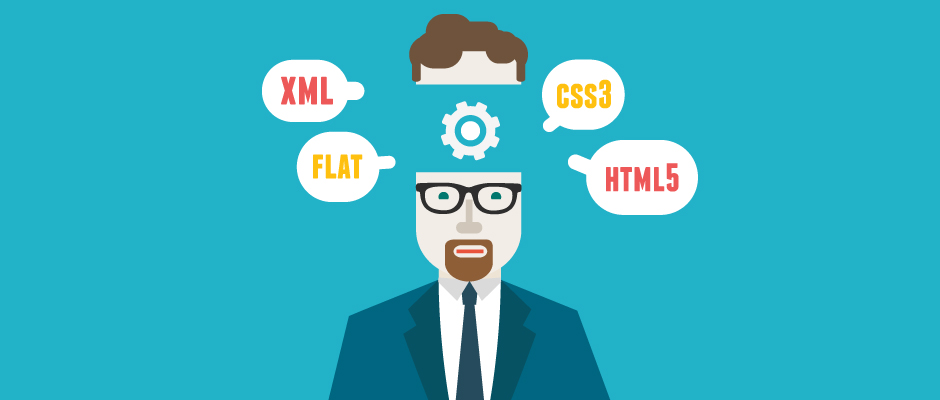 Web Front-end
Web Front-end
 Front-end Q&A
Front-end Q&A
 Building Fluid Web Interactions with CSS Animations and Transitions
Building Fluid Web Interactions with CSS Animations and Transitions
Building Fluid Web Interactions with CSS Animations and Transitions
Jul 08, 2025 am 02:31 AMCSS animation and transition can improve the web interactive experience, but it needs to be used in moderation. 1. CSS transition is suitable for smooth state changes in properties such as color and size. It is often used for button hovering and menu expansion. Transition attributes, duration, easing functions and triggering conditions need to be specified; 2. CSS animation defines keyframes through @keyframes and controls them with animation attributes. It is suitable for complex behaviors such as loop playback or delayed execution, such as rotation loading animation; 3. When using it, pay attention to the balance between performance and user experience, avoid excessive complex animations, give priority to the use of hardware acceleration attributes such as transform and opacity, and consider accessibility, and appropriately control the animation duration and device compatibility.

In web design, smooth interactive experience can often significantly increase users' preference for the website. Using CSS animations and transition effects, you can easily achieve some visual "little surprises" to make the page look more vivid and layered. The key is to use it just right, not pile up fancy effects.

1. Understanding the basics of CSS Transitions
CSS transitions are suitable for properties that will smoothly change from one state to another, such as color, size, position, etc. It is ideal for use in scenarios such as button hovering, menu expansion, etc.

To achieve a simple transition, you need to specify at least the following:
- Properties to transition (such as
background-color) - Duration (such as
0.3s) - Easing function (such as
ease-in-out) - Triggering conditions (such as
:hover)
For example:

.button {
background-color: #333;
transition: background-color 0.3s ease;
}
.button:hover {
background-color: #555;
}This way the button will have a soft color gradient effect when the mouse hovers. Be careful not to add transitions to too many attributes, otherwise it will affect performance or appear to be sluggish.
2. Create more complex animations using animations
When you need more complex behaviors than transitions, such as looping playback, multiple keyframes, or delayed execution, you should use CSS animation.
The basic steps are as follows:
- Define a
@keyframesrule that describes the keyframes of the animation - Apply animations through
animationattribute in selector
For example, do a simple loading animation:
@keyframes spin {
from { transform: rotate(0deg); }
to { transform: rotate(360deg); }
}
.spinner {
animation: spin 1s linear infinite;
} This .spinner element will continue to rotate. You can control the number of playback times, direction, delay, etc. of the animation, which is very flexible. But it should be noted that frequent use of animations may affect page performance, especially on mobile devices.
3. Pay attention to the balance between performance and user experience
While animations and transitions can make the page more attractive, abuse can also cause the page to stutter or distract the user. Here are some practical suggestions:
- Avoid using complex animations simultaneously on a large number of elements
- Using hardware-accelerated properties such as
transformandopacity, they are usually more efficient - Provide elegant downgrades on devices that do not support animation
- Control the duration of the animation, do not be too slow or too fast (generally 0.2s–0.5s are relatively comfortable time)
In addition, given the accessibility, some users may be sensitive to dynamic content, and they can reduce animations by querying prefers-reduced-motion motion via media:
@media (prefers-reduced-motion: no-preference) {
.fancy-animation {
animation: pop 0.4s ease;
}
}Basically that's it. CSS' animation and transition functions are powerful enough, but in actual projects, it is recommended to focus on simplicity and effectiveness, and do not ignore the actual feelings of users in order to show off their skills.
The above is the detailed content of Building Fluid Web Interactions with CSS Animations and Transitions. For more information, please follow other related articles on the PHP Chinese website!

Hot AI Tools

Undress AI Tool
Undress images for free

Undresser.AI Undress
AI-powered app for creating realistic nude photos

AI Clothes Remover
Online AI tool for removing clothes from photos.

Clothoff.io
AI clothes remover

Video Face Swap
Swap faces in any video effortlessly with our completely free AI face swap tool!

Hot Article

Hot Tools

Notepad++7.3.1
Easy-to-use and free code editor

SublimeText3 Chinese version
Chinese version, very easy to use

Zend Studio 13.0.1
Powerful PHP integrated development environment

Dreamweaver CS6
Visual web development tools

SublimeText3 Mac version
God-level code editing software (SublimeText3)
 How does React handle focus management and accessibility?
Jul 08, 2025 am 02:34 AM
How does React handle focus management and accessibility?
Jul 08, 2025 am 02:34 AM
React itself does not directly manage focus or accessibility, but provides tools to effectively deal with these issues. 1. Use Refs to programmatically manage focus, such as setting element focus through useRef; 2. Use ARIA attributes to improve accessibility, such as defining the structure and state of tab components; 3. Pay attention to keyboard navigation to ensure that the focus logic in components such as modal boxes is clear; 4. Try to use native HTML elements to reduce the workload and error risk of custom implementation; 5. React assists accessibility by controlling the DOM and adding ARIA attributes, but the correct use still depends on developers.
 A Deep Dive into WebAssembly (WASM) for Front-End Developers
Jul 27, 2025 am 12:32 AM
A Deep Dive into WebAssembly (WASM) for Front-End Developers
Jul 27, 2025 am 12:32 AM
WebAssembly(WASM)isagame-changerforfront-enddevelopersseekinghigh-performancewebapplications.1.WASMisabinaryinstructionformatthatrunsatnear-nativespeed,enablinglanguageslikeRust,C ,andGotoexecuteinthebrowser.2.ItcomplementsJavaScriptratherthanreplac
 Server-Side Rendering with Next.js Explained
Jul 23, 2025 am 01:39 AM
Server-Side Rendering with Next.js Explained
Jul 23, 2025 am 01:39 AM
Server-siderendering(SSR)inNext.jsgeneratesHTMLontheserverforeachrequest,improvingperformanceandSEO.1.SSRisidealfordynamiccontentthatchangesfrequently,suchasuserdashboards.2.ItusesgetServerSidePropstofetchdataperrequestandpassittothecomponent.3.UseSS
 How to manage component state using immutable updates in React?
Jul 10, 2025 pm 12:57 PM
How to manage component state using immutable updates in React?
Jul 10, 2025 pm 12:57 PM
Immutable updates are crucial in React because it ensures that state changes can be detected correctly, triggering component re-rendering and avoiding side effects. Directly modifying state, such as push or assignment, will cause React to be unable to detect changes. The correct way to do this is to create new objects instead of old objects, such as updating an array or object using the expand operator. For nested structures, you need to copy layer by layer and modify only the target part, such as using multiple expansion operators to deal with deep attributes. Common operations include updating array elements with maps, deleting elements with filters, adding elements with slices or expansion. Tool libraries such as Immer can simplify the process, allowing "seemingly" to modify the original state but generate new copies, but increase project complexity. Key tips include each
 Security Headers for Frontend Applications
Jul 18, 2025 am 03:30 AM
Security Headers for Frontend Applications
Jul 18, 2025 am 03:30 AM
Front-end applications should set security headers to improve security, including: 1. Configure basic security headers such as CSP to prevent XSS, X-Content-Type-Options to prevent MIME guessing, X-Frame-Options to prevent click hijacking, X-XSS-Protection to disable old filters, HSTS to force HTTPS; 2. CSP settings should avoid using unsafe-inline and unsafe-eval, use nonce or hash and enable reporting mode testing; 3. HTTPS-related headers include HSTS automatic upgrade request and Referrer-Policy to control Referer; 4. Other recommended headers such as Permis
 What are custom data attributes (data-*)?
Jul 10, 2025 pm 01:27 PM
What are custom data attributes (data-*)?
Jul 10, 2025 pm 01:27 PM
The data-* attribute is used in HTML to store additional data, and its advantages include that the data is closely related to elements and comply with HTML5 standards. 1. When using it, name it starts with data-, such as data-product-id; 2. It can be accessed through JavaScript's getAttribute or dataset; 3. Best practices include avoiding sensitive information, reasonable naming, paying attention to performance and not replacing state management.
 Applying CSS Styles to Scalable Vector Graphics (SVG)
Jul 10, 2025 am 11:47 AM
Applying CSS Styles to Scalable Vector Graphics (SVG)
Jul 10, 2025 am 11:47 AM
To style SVGs using CSS, you first need to embed SVGs inline into HTML for fine control. 1. Inline SVG allows its internal elements such as or to be directly selected through CSS and to apply styles, while external SVG only supports global styles such as width and height or filters. 2. Use regular CSS syntax such as .class:hover to achieve interactive effects, but use fill instead of color to control the color, and use stroke and stroke-width to control the outline. 3. Use class names to organize styles to avoid duplication and pay attention to naming conflicts and scope management. 4. The SVG style may be inherited from the page, and can be reset through svg*{fill:none;stroke:none;} to avoid
 How to add a favicon to a website?
Jul 09, 2025 am 02:21 AM
How to add a favicon to a website?
Jul 09, 2025 am 02:21 AM
Adding website Favicon requires preparing icon files, placing the correct path and quoting them. 1. Prepare multi-size .ico or .png icons, which can be generated by online tools; 2. Put favicon.ico in the website root directory; 3. If you need to customize the path or support more devices, you need to add a link tag reference in the HTMLhead; 4. Clear the cache or use the tool to check whether it is effective.





